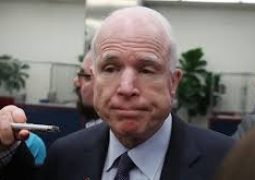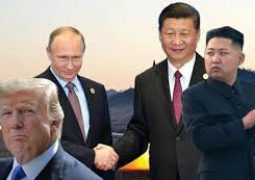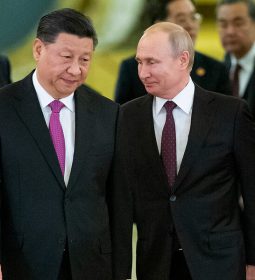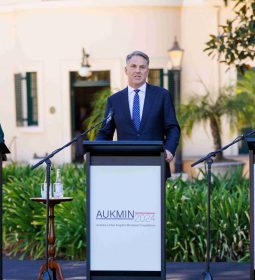India’s economic growth slowed to 6.1% in the fourth quarter ending March 2017, compared with 7.1% in the previous quarter, as the government’s note ban decision slowed activity in cash-dependent sectors.
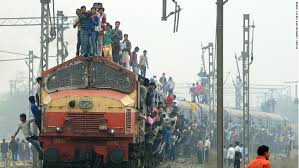
India’s economic growth slowed to 6.1% in the fourth quarter ending March 2017, compared with 7.1% in the previous quarter, as the government’s note ban decision slowed activity in cash-dependent sectors.
Government data showed the gross domestic product grew 7.1% in the full financial year 2016-17, slower than 8% recorded in the previous year.
After November’s demonetisation drive, the government has come under criticism from opposition political parties and economists for putting a poke on India’s growth story and triggering job cuts.
“The impact of demonetisation was bound to show up on the growth figures,” said DK Joshi, chief economist of Crisil, while forecasting 7.4% expansion in 2017-18.
The demonetisation seems to have impacted the GVA in the third as well as fourth quarter of 2016-17 which slipped to 6.7% and 5.6% respectively, from 7.3% and 8.7%.
“The economy was expected to outperform in the fiscal gone by with favourable monsoon and wage increase post-implementation of the 7th Pay Commission, which was expected to spur consumption in the second half of the fiscal,” says Madan Sabnavis, chief economist of Care Ratings.
“However, demonetisation had temporarily slowed down economic activities in the third quarter due to cash crunch,” he said forecasting growth to rebound to 7.6-7.8% in 2017-18.
Almost all sectors, with the exception of agriculture, showed deceleration in the aftermath of demonetisation.
While the manufacturing sector output in the fourth quarter slowed to 5.3% versus 12.7% in the same period of last year, the construction sector slipped into the negative territory.
Thanks to good monsoon, the agricultural sector posted a huge jump in growth as it expanded by 4.9% during 2016-17 compared to dismal growth of 0.7% in the previous year.
Analysts say a normal monsoon along with ongoing reforms may push up the growth rate in Asia’s third largest economy in the current year.
Jobless growth?
Data showed private consumption’s share in GDP fell to 58.7% in January-March, from 59.1% a year ago.
Growth in gross fixed capital formation (GCFC), a gauge for measuring investment, was almost flat in Q4. Investment’s share in GDP fell to 25.5% in Q4 from 28.5% a year ago.
As companies scaled down investment, the country witnessed job losses.
Sensing job losses in the past few months, Modi has recently set up a high-level task force under Niti Aayog vice-chairman Arvind Panagariya to fine tune jobs data so that the government can frame policies to spur employment.
In the last budget session of the Parliament, minister of state for planning Rao Inderjit Singh admitted that the overall unemployment has risen to 5% from just 3.8% in 2011.”
The World Employment and Social Outlook report said: “Unemployment in India is projected to increase from 17.7 million last year to 17.8 million in 2017 and 18 million next year. In percentage terms, unemployment rate will remain at 3.4 per cent in 2017-18.”
Widespread slowdown
During 2016-17, the growth rate of electricity generation slowed 7.2% from 5% in 2015-16, while construction growth eased to 1.7% from 5%.
The financial sector growth eased to 5.7% during 2016-17, from 10.8% in the previous year.
Trade, hotels, transport and communication grew by 7.8% as compared with 10.5% in 2015-16.
Public administration, defence and other services grew 11.3% as compared with 6.9% due to the salary hike of government staff.
The World Bank on Monday projected India to expand by 7.2% in this financial year as the country reaps the benefits of reforms such as the Goods and Services Tax scheduled to be rolled out from July.
The GDP numbers have been reworked on the basis of the new data series that includes many more items and are based on the price level prevailing on 2011-12.
Analysts expect no rate cuts from the RBI in the near future to spur growth but said the Goods and Services Tax rollout could provide an impetus to the economy.
Crisil’s Joshi said he expects RBI to pause on rates at the monetary policy review scheduled during July 6-7.
In April, RBI left policy lending rate (repo) unchanged and hiked borrowing rates (reverse repo). Between January 2015 and December 2016, RBI lowered policy rates by 175 basis points as inflation was sliding.
“The nationwide rollout of GST in the second quarter of FY18 is expected to spur growth further, albeit marginally,” said Sabnavis of Care Ratings.
- Previous Qatar’s repeated mentorship of Gulf Arab neighbors rattles Trump’s anti-Iran axis
- Next Cows exhale oxygen, absorb cosmic energy, home to gods: Rajasthan HC judge










